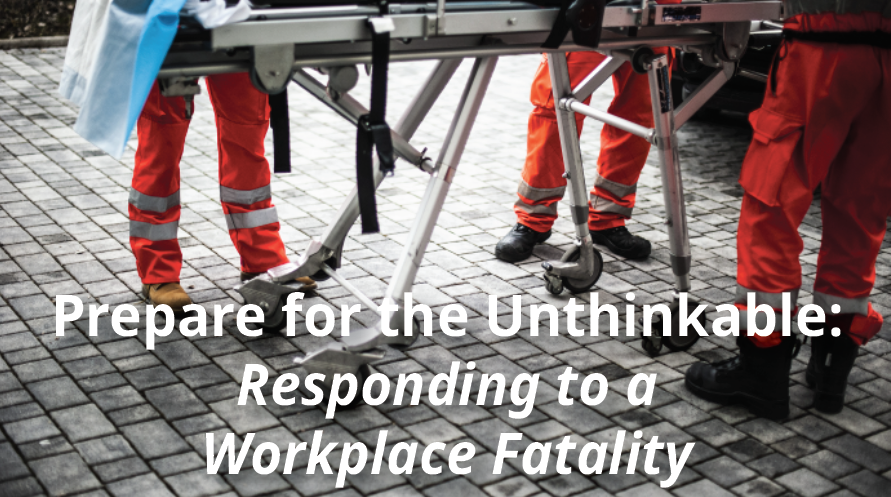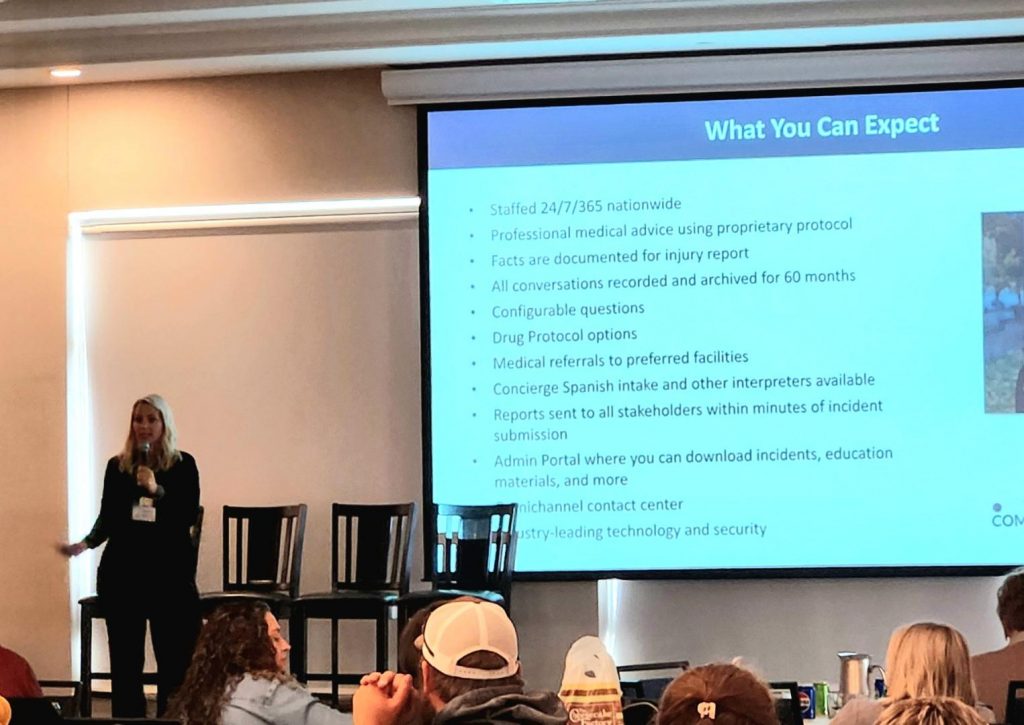
Local governments perform services in many situations where not all factors can be controlled or planned for. Despite the best efforts to mitigate as much risk as possible, some of these uncontrolled circumstances may result in an employee being fatally injured.
“It is challenging to prepare for instances where a fatality occurs, either due to an employee perishing or causing the death of another while working,” said Betty Coulter, Senior Risk Control Manager at Safety National. “These traumatic situations often, and for valid reasons, elicit immediate emotional responses. Risk managers must be prepared to handle not only the incident itself, but the aftermath, including an entire staff’s response to the loss of a co-worker and friend.”
These are a few of the procedures to consider when responding to a critical incident.
1. Engage a response team.
This team might include representatives from the council or board, managers or administrators, legal, human resources and operations. The team should secure the site, coordinate with law enforcement and medical personnel, communicate with employees and families, and preserve evidence for investigation.
2. Involve the legal team.
The city, county or corporate attorney should be notified immediately following an incident to provide guidance on handling regulatory and liability concerns. They can help navigate confidentiality laws, compliance requirements, and possible litigation risks.
3. Review all related information.
Appointing a spokesperson to communicate with the media can ensure the correct information is provided. Legal counsel should oversee communication strategies to ensure statements made to employees, the public, and the media do not expose the organization to undue liability.
4. Secure the scene.
Ensure that law enforcement and other authorized personnel secure the scene to ensure it is safe for responders and investigators to enter. Then collect pictures, recordings and impound any physical evidence that investigators can use to help determine what contributed to the incident.
5. Notify the proper channels following a fatality.
IMWCA members should call Company Nurse to report the claim as soon as practical. You can also call your IMWCA Safety and Risk Improvement adviser so we can assist you with how to proceed with incident review and OSHA reporting.
In the event of an employee fatality, you have 8 hours to notify the Occupational Safety and Health Administration (OSHA).
6. Embrace the Employee Assistance Program (EAP).
Employees, supervisors, and leadership can be overwhelmed by the emotional toll of a workplace fatality. An EAP, can provide counseling services, mental health resources, and emotional support for those who need it following a tragedy. If an EAP is not in place, consider bringing in a crisis intervention team or a licensed counselor to help employees navigate their reactions.
7. Documentation of events and follow-up steps.
Have all witnesses document what they saw before, during, and after a fatality as soon as possible. This information is important for both internal reviews and external investigations and to ensure accuracy. This should also include follow-up actions such as revising safety protocols and tracking employee well-being.
8. Complete an after-action analysis.
Once the immediate crisis has passed, conduct a thorough after-action analysis to assess what worked well and what could be improved. The evaluation should involve employees directly affected, leadership, and legal representatives. Policy or procedural gaps should be reviewed to enhance training and to determine what measures to implement to prevent future incidents.
While this article focuses on workplace injury, all these steps can be applied to other catastrophic events that local governments may face.
Sections of the article were contributed by Safety National and modified to meet the needs of our members.

Upcoming Virtual Round Table:
- August 12
Conducting Effective Safety Meetings
Workers’ Compensation Virtual Round Table
Gain valuable knowledge and real-world solutions for handling workers’ compensation issues in our quarterly virtual round tables. Each session kicks off at 9:30 a.m. with a 15-20 minute presentation, followed by an open discussion where you can ask questions and exchange ideas.
We encourage participants to submit questions when registering to make the discussion even more relevant. These round tables are also a perfect fit for your monthly safety meetings, providing valuable training for your team. All sessions will be recorded. Don’t miss this opportunity to stay informed and improve workplace safety!

Upcoming Webinars:
- August 5
- August 14
- August 19
Webinar: Optimizing Injury Reporting & Triage for Better Outcomes
Join us for this interactive webinar as we walk through the Company Nurse process and how the Omni Contact Center makes injury reporting simple and efficient. You’ll learn how employees can report injuries using tools like the Digital Assistant and QR Code, and how the Admin Portal gives members direct access to reporting and case management features.
We’ll also share real results—like trends in lag time, self-care recommendations, and key injury metrics—and invite your questions throughout the session. Whether you’re new to the system or looking to improve your injury management approach, this is a chance to learn, ask questions, and get practical tips from the experts.





